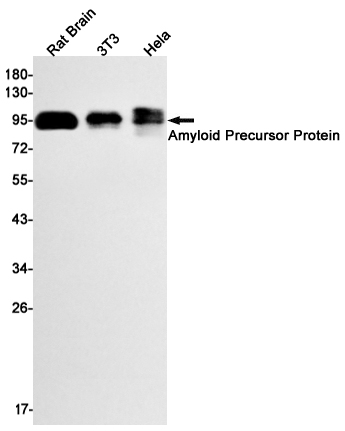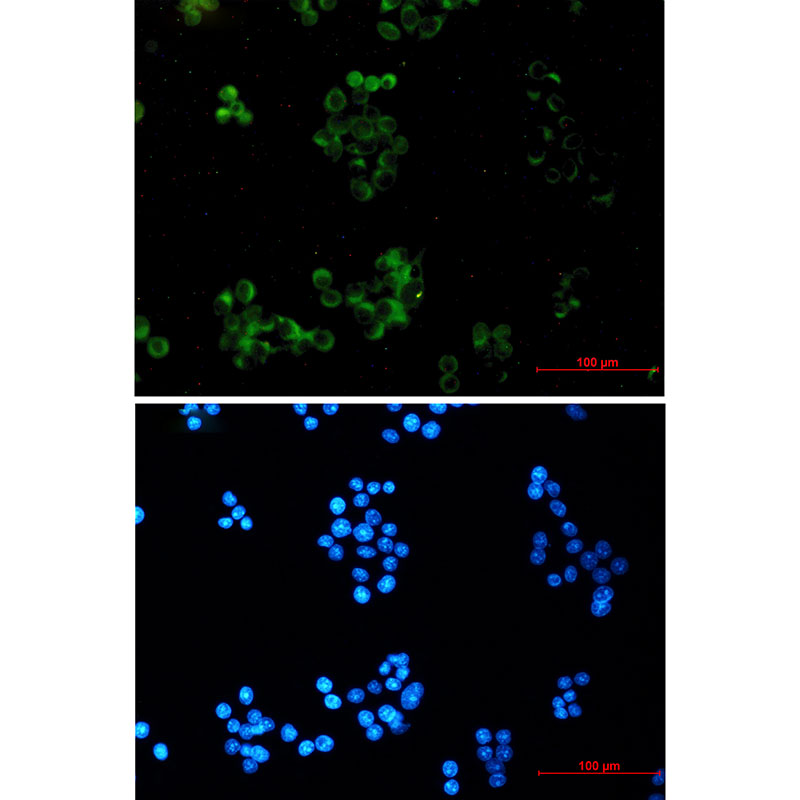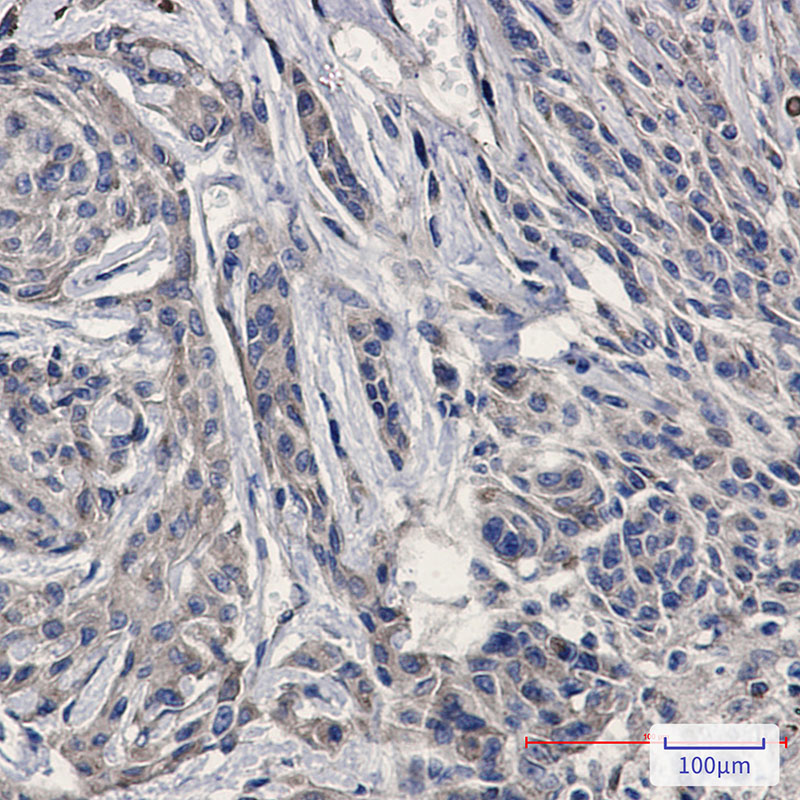


| WB | 1/500-1/1000 | Human,Mouse,Rat |
| IF | 1/20 | Human,Mouse,Rat |
| IHC | 1/50-1/100 | Human,Mouse,Rat |
| ICC | 1/50-1/200 | Human,Mouse,Rat |
| FCM | 咨询技术 | Human,Mouse,Rat |
| Elisa | 咨询技术 | Human,Mouse,Rat |
| Aliases | APP; A4; AD1; Amyloid beta A4 protein; ABPP; APPI; APP; Alzheimer disease amyloid protein; Cerebral vascular amyloid peptide; CVAP; PreA4; Protease nexin-II; PN-II |
| Entrez GeneID | 351 |
| WB Predicted band size | Calculated MW: 87 kDa; Observed MW: 100 kDa |
| Host/Isotype | Rabbit IgG |
| Antibody Type | Primary antibody |
| Storage | Store at 4°C short term. Aliquot and store at -20°C long term. Avoid freeze/thaw cycles. |
| Species Reactivity | Human,Mouse,Rat |
| Immunogen | A synthetic peptide of human Amyloid Precursor Protein |
| Formulation | Purified antibody in TBS with 0.05% sodium azide,0.05%BSA and 50% glycerol. |
+ +
以下是关于Amyloid Precursor Protein(APP)抗体的3篇参考文献,按研究内容和时间顺序整理:
1. **"Amyloid beta-protein and the genetics of Alzheimer's disease"**
- **作者**: Selkoe, D. J. (1991)
- **摘要**: 该综述探讨了APP在阿尔茨海默病中的核心作用,重点描述了针对APP不同表位的抗体在识别β-淀粉样蛋白(Aβ)前体及其裂解产物中的应用,为理解APP代谢途径提供了实验依据。
2. **"The precursor of Alzheimer's disease amyloid A4 protein resembles a cell-surface receptor"**
- **作者**: Kang, J., et al. (1987)
- **摘要**: 这篇开创性研究首次克隆了APP基因,并利用特异性抗体证实APP是一种跨膜蛋白,其细胞外结构域可能参与细胞黏附,为后续抗体开发及病理机制研究奠定基础。
3. **"Monoclonal antibodies against precursor proteins of Alzheimer's disease beta-amyloid"**
- **作者**: Weidemann, A., et al. (1989)
- **摘要**: 研究团队开发了针对APP不同区域的单克隆抗体,通过免疫印迹和免疫组化揭示了APP在正常与阿尔茨海默病脑组织中的表达差异,验证了抗体在疾病病理检测中的特异性。
---
**扩展提示**:若需更近期研究(如靶向APP的免疫疗法或结构解析),可补充:
4. **"Antibody-based immunotherapy targeting APP pathway in Alzheimer's disease"** (2020) 等文献,关注抗体在治疗中的潜力。
The amyloid precursor protein (APP) is a transmembrane glycoprotein widely expressed in various tissues, particularly in neurons. It plays roles in synaptic formation, neuronal adhesion, and intracellular signaling. APP is proteolytically processed by α-, β-, and γ-secretases, generating fragments including amyloid-β (Aβ), which aggregates into plaques in Alzheimer’s disease (AD). Antibodies targeting APP are essential tools for studying its physiological functions and pathological roles in neurodegenerative diseases.
APP-specific antibodies are designed to recognize distinct epitopes or cleavage products. Common targets include full-length APP (flAPP), soluble APP fragments (sAPPα/sAPPβ), and Aβ peptides. Antibodies like 6E10 (detects Aβ1-16) and 4G8 (Aβ17-24) are widely used to identify Aβ species in AD research. Others, such as Y188 or CT695. target the C-terminal region, helping study APP processing and γ-secretase activity. Phosphorylation-specific antibodies (e.g., Thr668) investigate post-translational modifications linked to AD progression.
These antibodies are critical in techniques like Western blot, immunohistochemistry, and ELISA to quantify APP isoforms, monitor cleavage dynamics, or assess Aβ accumulation in cellular and animal models. They also aid in developing diagnostic assays and therapeutic strategies, including Aβ-targeting immunotherapies. However, cross-reactivity with APP homologs (APLP1/2) or variability in Aβ oligomer detection requires careful validation. Overall, APP antibodies remain indispensable for unraveling APP biology and advancing AD research.
×